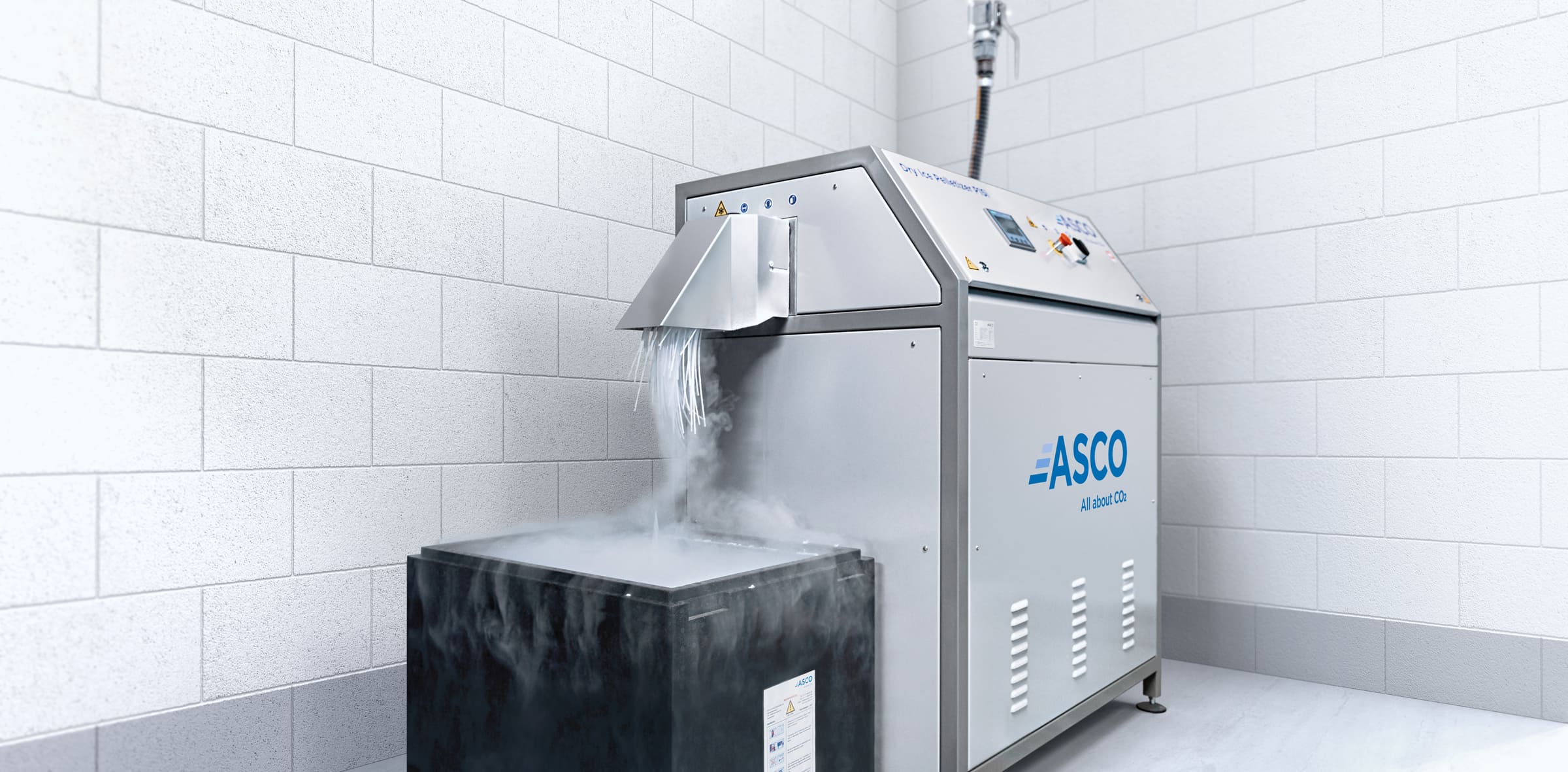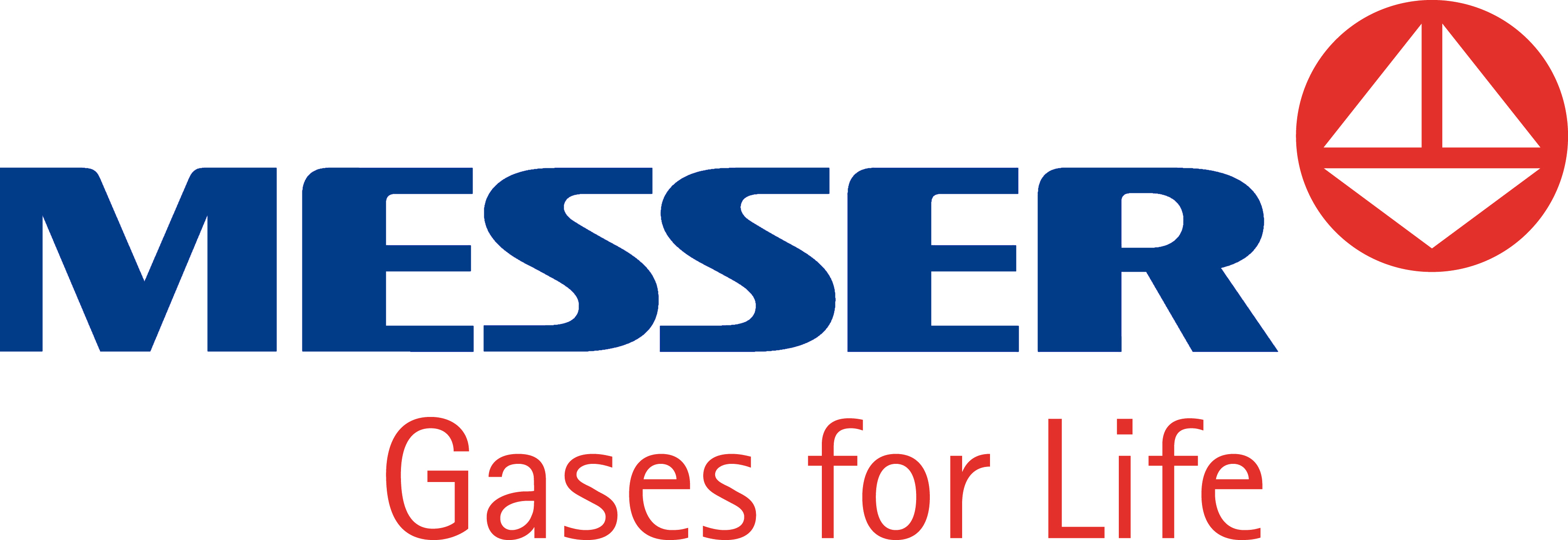By: Editorial Team Reading time: 7 Minutes
◤ COVER STORY
Dry ice protects mRNA vaccines
At -70°C, the mRNA vaccine against Covid-19 remains stable for a long time. Maintaining that temperature during vaccine transport is a real challenge that can be met in practice is best by cryogenic gases.
mRNA vaccines have become a key weapon in the battle against the coronavirus. This completely new type of vaccine uses the messenger ribonucleic acid’s genetic information to trigger a specific immune response in the human body. In contrast to more robust conventional vaccines, however, the mRNA’s molecular chains are rather delicate. Under normal conditions, they disintegrate very rapidly. It takes a temperature of -70°C to keep them stable.
Routine cryogenic operations
Freezing at such low temperatures is no problem in the production facilities of pharmaceutical and biotechnology companies. The required infrastructure has long since become available where needed and technicians know perfectly well how to handle the associated equipment. There are special cryogenic systems to achieve extremely low temperatures. Even the use of -196°C liquid nitrogen is part of the everyday routine in some biotechnology fields. Most of the tissue samples, egg cells and embryos stored in cryobanks are kept in a nitrogen bath. Liquid nitrogen is also used to freeze down the mRNA vaccines before storage or transport. This process should take place as rapidly as possible, in order to prevent the formation of larger ice crystals that can damage the molecular structures. By accelerating the procedure, the cryogenic gas protects the vaccine.
❝
Before the pandemic, cold chain logistics were of limited importance in the area of pharmaceuticals and biotechnology.

Jean-Claude Claeys, Application expert at Messer
But before the end of 2020, hardly anything was in place to support comparable cryogenic handling routines in the transport sector. “Conventional refrigerated trucks with a compressor-driven refrigeration unit achieve -20°C at best. For lower temperatures, the required technology and energy would be too costly,” explains Jean-Claude Claeys, applications expert at Messer. “Moreover, before the pandemic, cold chain logistics were of limited importance in the area of pharmaceuticals and biotechnology. Now all that has changed.” Claeys’ specialty is actually the food industry, but meanwhile he has also become intensely involved in vaccine refrigeration. Fabian Weber, Marketing Manager at Messer’s subsidiary ASCO Carbon Dioxide, confirms Claeys’ observation: “Since the approval of the first mRNA vaccine, we have experienced a huge increase in demand for dry ice and the associated equipment. Many logistics companies started to establish the relevant infrastructure at the end of last year. In practice, the most efficient way to maintain the cold chain when transporting these products is with dry ice.”
Shipping Boxes in stead of diesel generators
With most dry ice isothermal boxes used in food logistics applications, only the lid is filled with dry ice. But even that serves to maintain a temperature of 20°C for up to 18 hours. Not all vaccines require such low temperatures: for some, the cooling of a refrigerator also suffices. And even mRNA vaccines still retain their effectiveness at -20°C for several days. Nevertheless, where -20°C or even a normal refrigerator temperature suffices, dry ice provides major advantages in transport applications: Portable isothermal boxes such as the MINICRYO boxes made by our partner Olivo are easily procured, an unlimited supply of the dry ice coolant is generally available, and it is very easy to ensure the maintenance of the cold chain. Once its cooling energy is used up, the gaseous CO₂ is released to the atmosphere without leaving any residues (see infobox). While conventional cooling with compressor units consumes diesel, liberates NOX, volatile organic compound, fine dust particles and generates noise, our solutions with dry ice is a sustainable, silent way and requires no additional energy during transport.
Decompression generates cold
Dry ice refers to the solid form of carbon dioxide (CO₂). It forms when high-pressure liquid CO₂ is “relaxed”: as it escapes from the pressurized cylinder, the compressed gas instantaneously solidifies and transforms into a snowy mass that is colder than -78.5°C. That is the sublimation point of CO₂, where dry ice transitions directly from a solid to a gas at standard atmospheric pressure. The cyrogenic CO₂ snow can be pressed into pellets or blocks. ASCO supplies it to its customers in that form in insulated containers, where it can remain as dry ice for four to five days before it sublimates. It is transferred from the containers to insulated vaccine shipping boxes. Jean-Claude Claeys describes the well-structured process at one of the major manufacturers of the mRNA vaccine: “One shipping box holds almost a thousand vials of vaccine stacked in five layers. The bottom and top are filled with one kilogram of dry ice each and the sides are filled with 10.5 kilograms. In total each shipping box contains 23 kg of dry-ice pellets. These precautions guarantee that the temperature remains below -70°C.” A temperature recorder (tracker) in each cooler monitors the temperature profile.

Two-fold dry ice boom
Incidentally, the coronavirus pandemic boosted the use of dry ice already before the start of the vaccination campaign. During the lockdowns, last mile or home delivery, and the direct delivery B2C of food products (fresh and frozen) to consumers experienced a tremendous boom. Cooling with CO₂ provides many practical solutions in those applications, as well.
“And then when the vaccines came out, we had to shift into an even higher gear,” says Fabian Weber. “We worked straight through weekends to meet the demand. Then there was a bottleneck at our customers who had to fill the dry ice into the small transport containers. The greater the quantity, the harder it is to do this job by hand.” That’s why ASCO developed an automatic filling and dosing system for dry ice pellets. Moreover, many customers decided to produce their own dry ice with ASCO machines. They convert CO₂ from cylinders into the desired coolant only when it is needed – so it retains its cooling that much longer. “You can buy or rent the machines. Our iSeries pelletizers enable optional remote maintenance and monitoring, where we take care of everything right up to resupplying the CO₂,” explains Fabian Weber. “With our pay-per-use model, you have full control of the technology, but pay only for what you use.”
◤
CO₂ balance sheet of dry ice
Dry ice is carbon dioxide in solid form. When it warms up, it sublimates to its gaseous form. When its cooling energy is used up, it is released into the surroundings without leaving any residues. But it imparts no additional CO₂ load on the atmosphere, because the gas only runs a kind of victory lap in the cold chain. Virtually all industrial carbon dioxide is produced from waste gases generated by industrial processes such as fertilizer production. Had it not been recovered, it would have been released directly into the atmosphere. Instead, it is diverted, purified, and filled into tanks or pressure vessels. Processing, filling and transporting the gas takes about the same amount of energy as the corresponding processes for other technical gases. Dry ice’s high-efficiency cooling makes it possible to achieve ecologically meaningful savings elsewhere. It reduces diesel fuel consumption, exhaust gases and noise emissions. Boxes cooled with dry ice are simpler and less costly than the technically complex refrigeration equipment that they render superfluous. They obviously have no need for the often tricky coolants that active refrigeration systems require. As a result, in most cases dry ice is a cold chain logistics solution with a comparatively small CO₂ footprint and superior ecological balance sheet.
